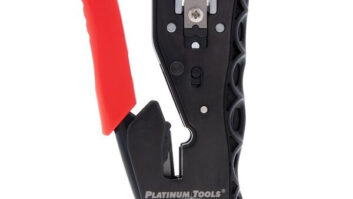Its a bit amazing to me how hardware-centric this entire A/V industry has gotten. Everything seems to have turned into this or that connector being the right one to be plugged into this or that appropriate input or output. When things dont work, the first thing every installer does is run out and check the cables and connections, and verify that the square peg is indeed in the square hole.
Certainly these are excellent starting points, to say nothing of the fact that it produces a typically high rate of success at solving the problem. But its what is not in that installers bag of tricks after these cables are checked, and the problem is not solved, that is sadly amazing.
Virtually every installation guru has his or her basic, physical-level troubleshooting tools. There is the requisite warbling wire toner and possibly some form of cable monitoring meter or coaxial distance calculating thing-a-ma-bob, but thats generally about it. Certainly people that install enough Category-grade cable will have a partially sophisticated wire analyzer, where they can check RJ45 to RJ45 connections to be sure that the cable run itself is fine. Beyond this degree of testability, it seems were doomed to have to call in a specialist. And that is what is getting to be the problem.
There are two things that Ive found define one as that specialist. First, and most visible, they always seem to have some great piece of test gear that actually looks at whatever it is that theyre there to fix. Take a simple TV video signal. How many cable or satellite installers or second-level support personnel can even say that theyve looked at what the real video signal should look like? To say nothing of the fact that none of them would even have the slightest idea of even how to use a TV video signal-monitoring piece of equipment if they even actually had one to use. Fortunately, the industry and its manufacturers have gotten all of these video signals down pat, so there really isnt any need for such field expertise anyway.
So why bring this up and why should any of us care? After all, most of us have gotten along just fine with what were using today. The exception is that the inter-device communications and control techniques that were utilizing today are changing, and theyre changing rapidly. And I dont see many of us changing along with them to keep pace. Virtually everything today is going to wireless, and whats not wireless is wired Ethernet LAN connected. So dedicated device-to-device connections are gradually giving way to streaming audio and streaming video. AMX and Crestron proprietary control networks are now standard Ethernet connections, and IP-based control system vendors are popping up all over the place. It falls to us, the regional and local installers, to deploy them and get them running. Herein lies the new frontier.
LAN networks are no longer just dedicated wires that someone can lay a meter onto and say go or no-go. Yes, that cable does indeed need to be tested, but one physical cable here or there doesnt reveal where the LAN network ought to be.
There are any number of active electronic devices connected to every LAN, any one of which may be damaged, downloading, or broadcasting, thereby impacting the quality of the LAN communications path itself.
There are hubs versus switches versus routers to consider for throughput reasons and Ethernet packet collision avoidance. All of the new music and video servers require full-time Internet access for downloading cover art and content reviews. This LAN is a busy communications highway. It is not just a nicely self-contained Cresnet or Axlink community that were dealing with any more. There we could keep our hands around all devices connected to it and be sure that everything was going okay. But these Ethernet LAN connections are far more sophisticated, and will never be totally within our control.
Just like most of the equipment that we are used to installing, these LANs also have their fair share of test gear available for installers and technicians to use. The problem with LANs is that they arent a purely physical entity. We can measure a cable, test IRs, measure audio levels, and verify input and output power. But LANs are truly a more complex beast, because they exist on non-physical level that cant be readily tested with a simple meter. The key element in LANs is the data packet and its ability to get delivered somewhere in a timely manner. There are myriad reasonably priced test devices that allow a technician to query a LAN to determine if the data packets are happening correctly, whether or not they are experiencing delays and/or excessive collisions, and to check the basic integrity of the LAN. Even a simple continuous PING test out to all peripheral devices in any audio/video/LAN network will reveal delays and collisions that can easily be mistaken to be bad cabling or wireless links. So hours could be spent on wild goose chases for incorrectly diagnosed problems.
So the manner in which we are now interconnecting our devices and systems is changing rapidly. This dictates that we must also change the way that we equip our people to deal with these new techniques.
Unfortunately, few technicians really understand how LANs work, and so they are ill equipped to analyze a sick one, much less cure what ails it. That brings us to the second thing that Ive been able to identify that any specialist has: the actual in-depth knowledge of how that system actually works. So we need to give consideration to sending these technicians to classes and seminars where Ethernet and LAN systems are explained and troubleshooting techniques are presented. Without this training and more sophisticated LAN analysis tools, we will be sending our knights to battle against 21st century mechanized warfare, and we, the owners and principals, will be the ones who lose in the end.
Carl Easton ([email protected]) is the director of systems engineering at Axiom Design Inc.







